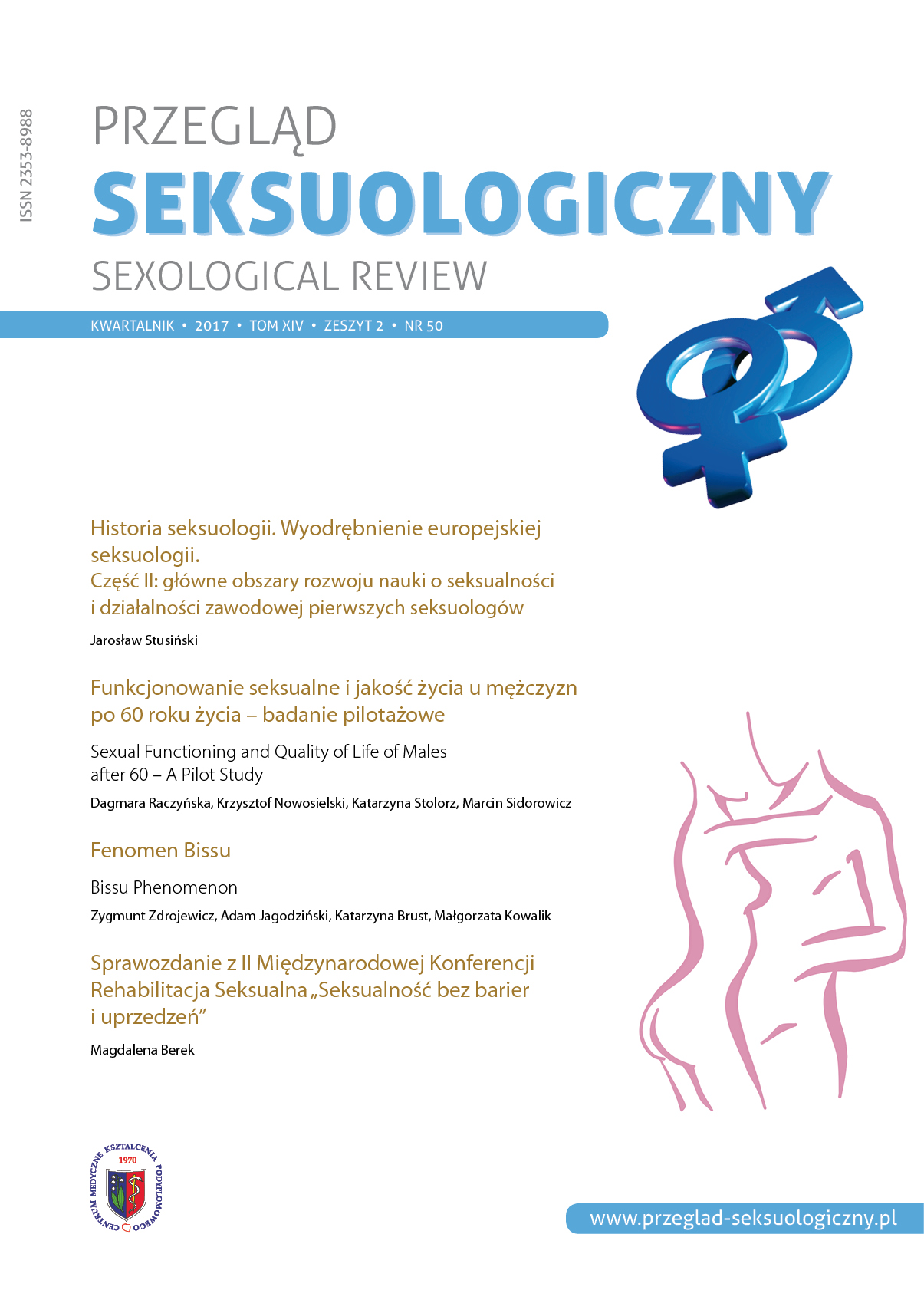Funkcjonowanie seksualne i jakość życia u mężczyzn po 60 roku życia – badanie pilotażowe.
Sexual Functioning and Quality of Life of Males after 60 – A Pilot Study.
Author(s): Dagmara Raczyńska, Krzysztof Nowosielski, Katarzyna Stolorz, Marcin SidorowiczSubject(s): Gender Studies
Published by: Centrum Terapii Michał Lew-Starowicz
Keywords: quality of life; male, sexuality; erection disorders; sexual disorders; premature ejaculation; late-onset hypogonadism
Summary/Abstract: Introduction. With the passing of time, in a growing old male there occurs a decrease of sex steroids concentration. Biological changes are accompanied by social, and economic changes. A consequence of this process may be different social, family and sexual functioning of an individual. Paper’s objective. The paper’s objective was to evaluate sexual functions and quality of life of males after 60. Methods and material. 50 males aged over 60 who were also the patients of a urological clinic from the area of Górny Śląsk [Upper Silesia]. A research tool used in this study was a questionnaire contained 25 questions linked with social and economic situation, sexual life and disorders as well as validated and standardized to the Polish conditions assessment scales examining the quality of life – WHOQL-BREF, sexual quality of life questionnaire – SQOL-M and the Erection Hardness Score (EHS). Erection disorders and premature ejaculation were diagnosed on the basis of DSM-5 criteria laid down in a survey questionnaire Results. 66% of respondents declared being in a permanent relationship. 78% of respondents were sexually active. 68% of the sexually active respondent score their erection at 4 in the 4-point EHS scale. A vast majority of participants admitted to occasional use of drugs improving sexual performance. An analysis of sexual disorders in the examined males based on the DSM-5 criteria showed that sexual disorders occur in 10% of the male population and they are usually linked with premature ejaculation and erection disorders. An analysis of sexual life quality parameters and sexual behaviours showed a generally average level of satisfaction with the sexual life and with the sexual life with the partner. Likewise, the quality of relationship was also rated at an average level. The quality of sexual life evaluated according to the SQOL-M scale scored highly (69 out of total 100 possible points). Similarly, the quality of life assessed using the WHOQLQ-BREF scale should be regarded as average and high considering individual as well as summary result (94 out of 120 points). No statistically valid differences were identified with respect to the examined sexual behaviour parameters and the quality of sexual life in individual age sub-groups. Conclusions. Majority of men over 60 are sexually active. Some of the sexual disorders in the examined group of males was insignificant and the declared erection quality as expressed by the hardness factor was good or very good. The evaluation of the satisfaction of the sexual life with the partner, relations with the partner and the quality of sexual life assessed based on the SQOLM ranged within the average. The quality of life of the patients participating in the survey evaluated using the WHOQOL-BREF scale was high.
Journal: Przegląd Seksuologiczny
- Issue Year: 14/2017
- Issue No: 2
- Page Range: 23-41
- Page Count: 19
- Language: English, Polish

